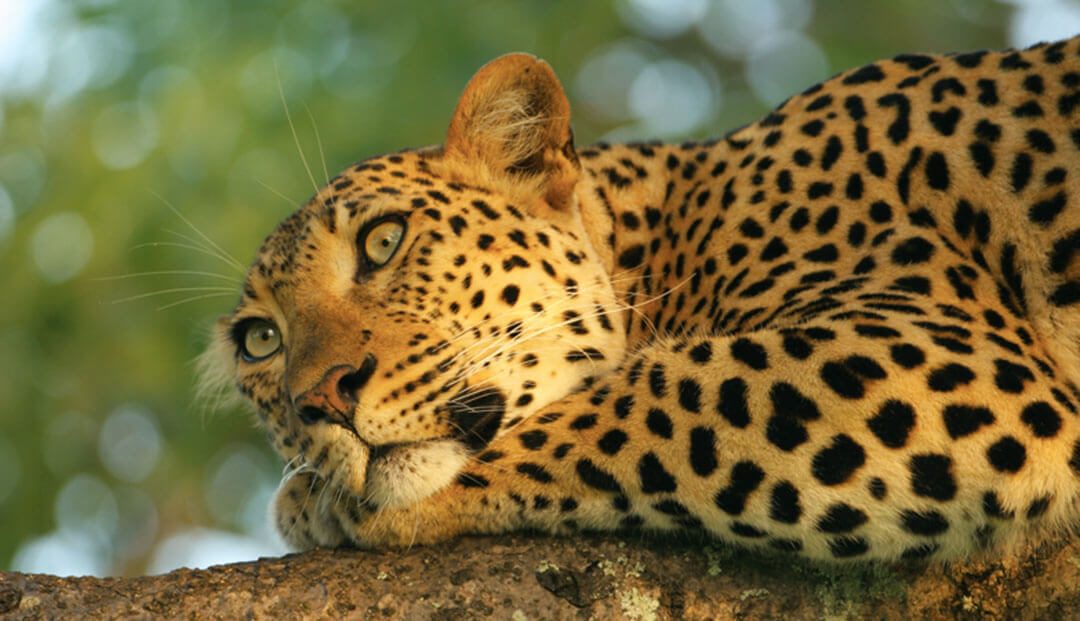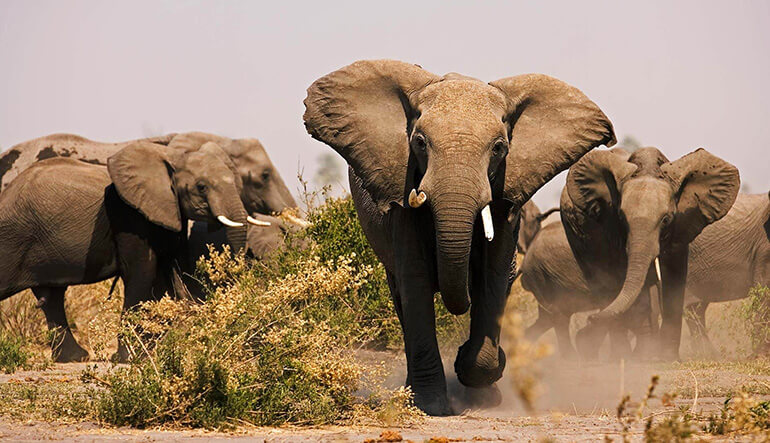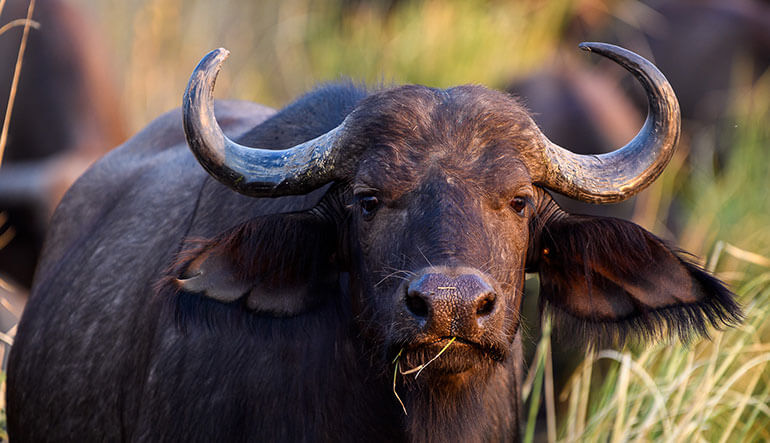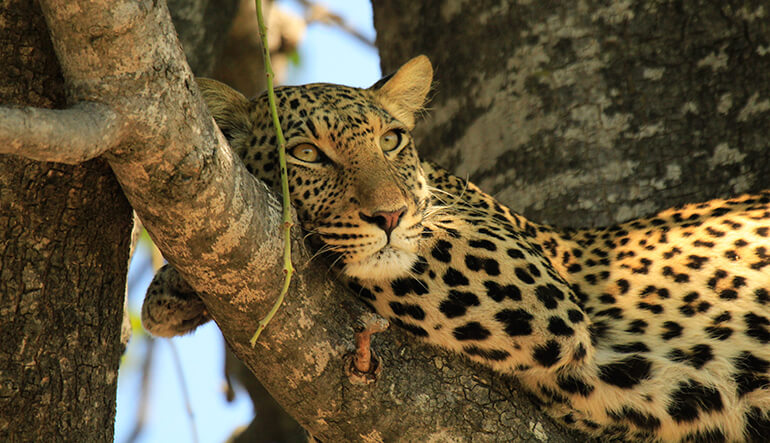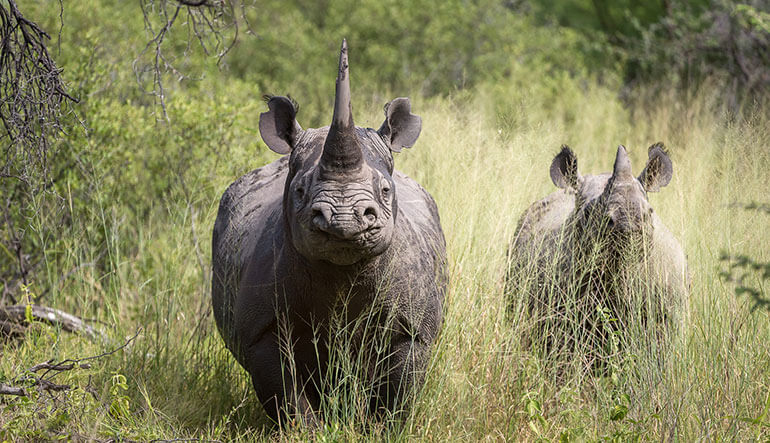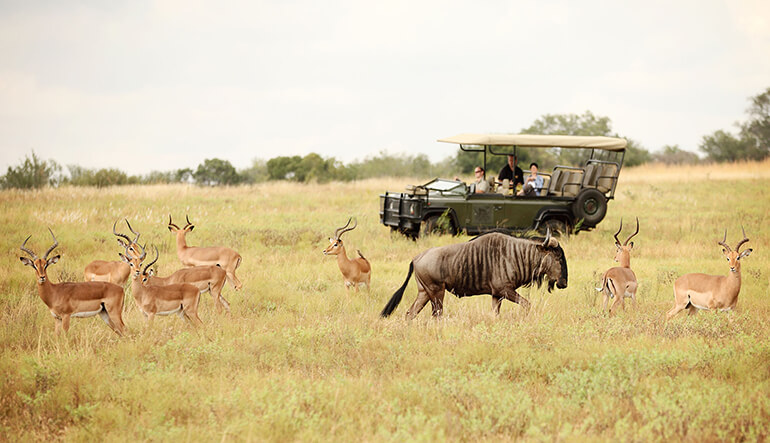Africa is the only continent in the world where you can come face-to-face with the most dangerous animals roaming free in the wild. Of Africa’s wildlife species, five particular animals have earned a special reputation as Africa’s most notorious creatures, and are a sought-after sighting for safari goers.
Comprised of the African Elephant, the Cape Buffalo, the African Leopard, the African Lion and the African Rhino, the ‘Big Five’ are some of Africa’s most threatening yet fascinating animals, and witnessing them wander free in their natural habitat can be one of the most incredible experiences of your life.
Why Are They Called The Big Five?
The name ‘The Big Five’ dates many decades back. The name was initially given by hunters, who considered these five animals to be the most dangerous animals to hunt on foot, both because of their difficulty to track, as well as their reputation for fighting back and attacking hunters.
Africa’s Big Five were characterized by their strong survival instincts and lethal attacks when cornered or wounded. Although hunting on foot is no longer, the name – The Big Five – has stuck. These animals are still in danger of being killed by poachers for their meat, horns, heads and skin.
Who Are the Big Five
The African Elephant
The largest and heaviest of the Big Five animals, the African elephant is also the largest land animal on the planet. African elephants can eat up to 170 kg of plant material every day and are the greatest destroyers of wild vegetation due to their size and mass.
Elephants are very sociable animals and live in herds of up to 100. They are very communicative and use a wide range of sounds that can be heard from kilometres away. Elephants are relaxed and calm unless they are triggered and sense danger. An angry elephant can be extremely dangerous, digging its legs into the sand and sprinting its weight towards you.
The Cape Buffalo
The Cape Buffalo has killed more hunters than any other animal and has earned its reputation as being one of Africa’s most dangerous land animals. Cape Buffalos range in colour from grey to brown and can weigh up to 400 kg. They live in large herds of up to 1000, and you will most likely find them near watering holes, lakes and rivers.
The oxpecker bird has a symbiotic relationship with the buffalo, sitting on their back and eating the parasites that live on the buffalo’s skin. It’s a natural relationship where both animals win; the ox-pecker gets a free meanwhile the buffalo receives a clean, making him more comfortable.
The African Leopard
The most mysterious and secretive of the Big Five, the African leopard is tricky to spot because their fur gives them the perfect camouflage, making them dangerous hunters that are difficult to see. Leopards are masters at hiding and disguising themselves in high trees and bushes, and can jump up to 9 metres high.
Leopards are nocturnal, solitary animals, and won’t stay in one place for more than a few days. After a kill, leopards will drag the animal up a tree and hide it their so that their kill cannot be snatched by other predators.
The African Lion
Well known for their elegant yet intimidating reputation, the African Lion is the most famous animal of the Big Five. The king of the jungle, at the top of the food chain, lions are the top predators in the African wild and can eat up to a quarter of their body weight.
Lions are the only social cats, living in relatively large groups called prides. Here, the females do the majority of the hunting, while the males protect the territory. Lions spend most of their days under the shade, resting and they can sleep up to 20 hours in one day. Read more fun facts about lions here.
The African Rhino
There are two types of rhino in Africa; the black rhino and the white rhino; however, the black rhino was the original rhino that was considered to part of the Big Five. The black rhino is an endangered species that is highly threatened by illegal poachers for their meat and horns, and the population is estimated to be 6,487 black rhinos left in Africa.
The black rhino is darker and smaller than the white rhino and has a hook-shaped mouth to grab hold of trees and shrubs. Although rhinos are bulky looking, they are quick on their feet and have short tempers when provoked.
Where to See The Big Five
Seeing the Big Five in the wild is truly a magical experience. There are a plethora of national parks all over the country that offer 5-star safari accommodation, magnificent game drives and sightings of the famous Big Five.
See the Big Five in Safari in South Africa
South Africa’s Kruger National Park is rich with Big Five sightings. Here, it is common to see these animals within a few days. As well as game drives, you can also view the Big Five through walking safaris. Find out more about the booking a Kruger National Park safari.
View Kruger National Park accommodation | Browse safari tours
See the Big Five in Safari in Botswana
Another famous safari destination is Botswana. Home to the famous Okavango Delta, Botswana is a treasured location for water safaris among other safari experiences. A unique and exciting twist to the usual vehicle game drives, enjoy floating through the canals and channels, and spot the curious eyes of hippos while colourful frogs hop along giant lily pads. Find out more about the booking a Botswana safari in the Okavango Delta.
View Botswana accommodation | Browse safari tours
Now that you’ve heard of the Big Five, do you know who the Little Five are? We’ll follow up this post with more information on Africa’s other group of notorious creatures, the Little Five.
Thanks for reading!

